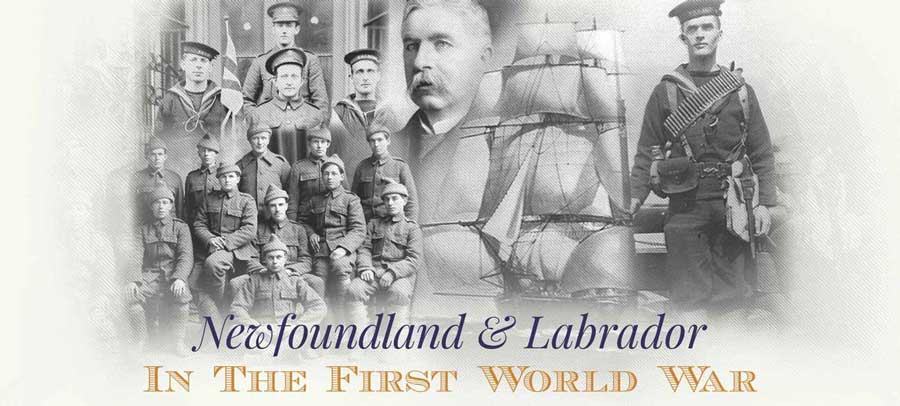1918-End of the War
The Royal Newfoundland Regiment spent the first three months of 1918 in the trenches at Passchendaele and digging the Brandhoek Line. The First World War had lasted far longer than anyone expected and the extreme trauma of trench warfare was taking a heavy toll on many of the men, which was reflected in their letters home.
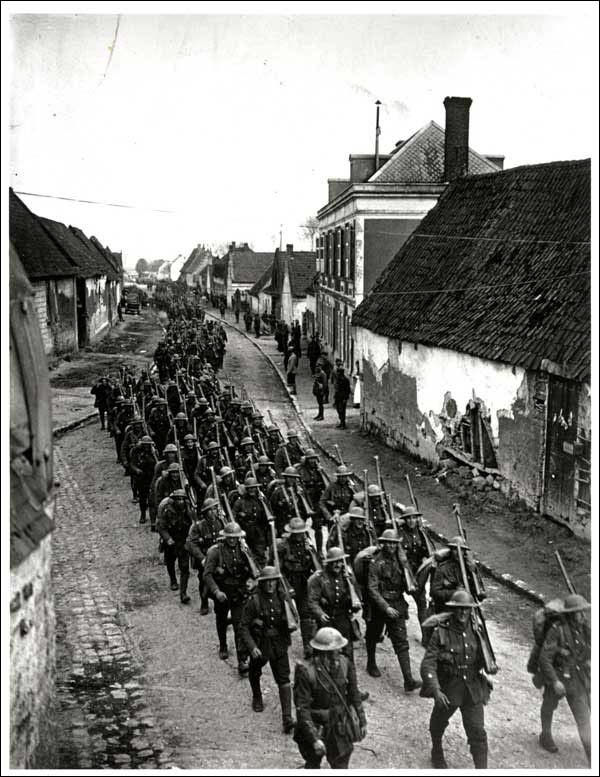
Courtesy of the Imperial War Museums (© IWM, Q 5352), London, England. http://www.iwm.org.uk/collections/item/object/205237493
"The war still rolls on and one almost begins to wonder how such a thing as war really is could possibly last longer than a week at the most, and how the people engaged in it can last for a day of real hard fighting," Lieutenant Henry Mews wrote to his Aunt Nell on March 22, 1918. "The war of the older days was at least a fair and square fight, but in these days unseen people plank shells, etc. down in the unseen fore and consequently both sides just wait and trust to luck." (Archives and Special Collections Division, Coll. 267 1.04.007)
The Regiment was once again on the battlefield in April 1918, as part of the Lys Offensive. It fought near the northern French town of Bailleul for ten days, until French soldiers relieved the men on April 21st. The Regiment had suffered 176 casualties at Bailleul - a heavy blow to an already depleted unit.
Removed from Front Lines
It would take months for recruiters at Newfoundland and Labrador to supply enough men to bring the Regiment back up to fighting strength, so Allied commanders decided to remove it from the front lines entirely. For the next few months, the Regiment guarded Field Marshal Haig's headquarters in Montreuil.
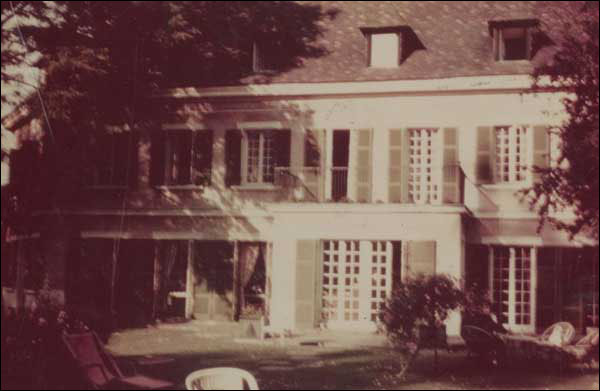
Courtesy of Archives and Special Collections (Coll 346 1.01.103) QE II Library, Memorial University of Newfoundland, St. John's, NL.
Its temporary removal from active operations also meant that the Newfoundland Regiment was no longer attached to the 29th Division - a unit it had served with for two and a half years. The Division's commander, Major General D. E. Cayley, praised the Regiment in his farewell speech:
"In bidding goodbye to the Royal Newfoundland Regiment on their departure from the 29th Division, I wish to place on record my very great regret at their withdrawal from a Division in which they have served so long and so brilliantly. The whole of their active service since September, 1915, has been performed in this Division, and during all that time the Battalion has shown itself to be under all circumstances of good and bad fortune, a splendid fighting unit. At Suvla, Beaumont Hamel, Gueudecourt, Monchy, Ypres, Cambrai, and during the last fighting near Bailleul, they have consistently maintained the highest standard of fighting efficiency and determination. They can look back on a record of which they and their fellow-countrymen have every right to be proud."(Nicholson 460)
Hundred Days Offensive
The Regiment remained at Montreuil for the spring and summer of 1918. In September, it once again had sufficient numbers to return to action: 724 men and a full complement of officers. By then, the Allies had launched their Hundred Days Offensive - a series of attacks against enemy forces that would ultimately push the Germans from France and bring the war to an end.
On September 28, 1918, the Royal Newfoundland Regiment was again in the trenches on the Ypres front, this time attached to the 28th Infantry Brigade of the 9th (Scottish) Division. It became involved in a two-day offensive to seize control of German strongpoints and to push the Allied front deeper into enemy territory.
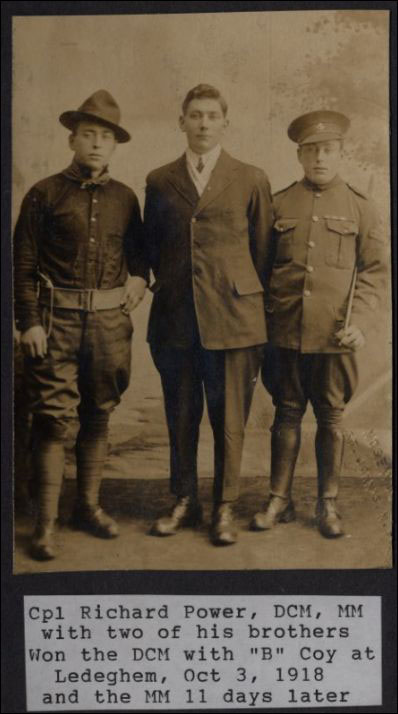
Courtesy of Archives and Special Collections Division (Coll 346 1.01.029) QE II Library, Memorial University of Newfoundland, St. John's, NL.
The Regiment captured all of its objectives and advanced its line by 14.5 km, at a cost of 100 casualties. It retreated to the village of Keiberg for a brief period of rest before entering the trenches at Ledeghem on October 2. It spent four days there, successfully defending the Allied front line from a German counterattack.
On October 14, the Regiment fought in the Battle of Courtrai. Its assignment was to move towards the River Lys and secure a railway track running north of Courtrai. The mission almost failed when the Regiment suddenly ran out of ammunition while under heavy enemy fire, but Private Thomas Ricketts volunteered to double back and retrieve the supplies.
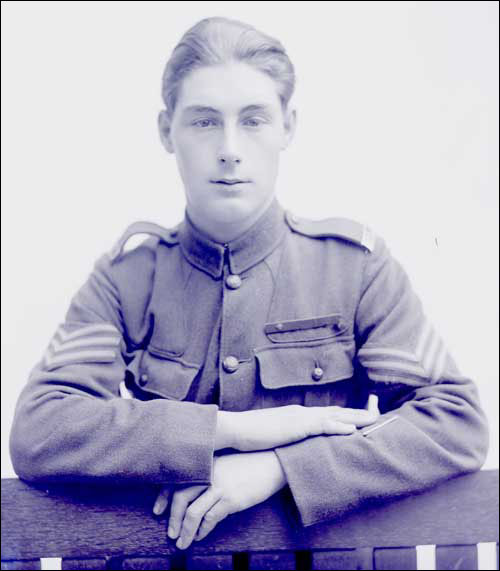
Courtesy of the Rooms Provincial Archives Division (F-4818), St. John's, NL.
The 17 year old ran a gauntlet of enemy fire, but he managed to retrieve the desperately needed ammunition. His selfless act of heroism allowed the Regiment to capture important enemy territory and eight prisoners of war. It also earned Ricketts the Victoria Cross, which is the highest award for valour a Commonwealth serviceman can receive.
In the coming days, the Regiment continued its advance into enemy territory. It crossed the River Lys on October 20 and then proceeded towards the village of Vichte. By then, the war was nearing its end and Germany had entered into armistice talks with the Allies. On October 26, the Royal Newfoundland Regiment was withdrawn from front line service altogether. It had lost 93 men since September 28.
End of War
When the Armistice was signed on November 11,1918, the Regiment was at Cuerne in Belgium. The fighting was finally over, but the men remained overseas for a few more months as part of the occupation force in Germany. They returned to England in April 1919 and prepared for their voyage home.
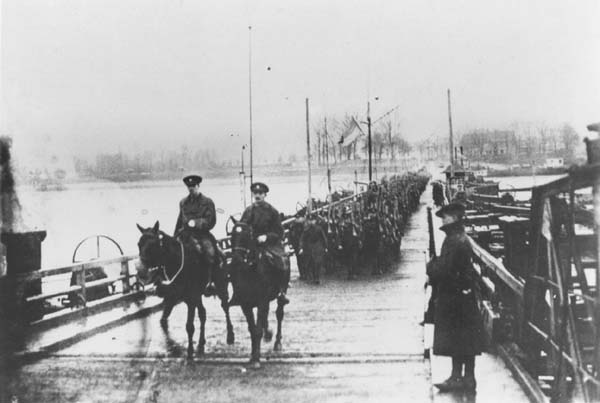
Courtesy of the Rooms Provincial Archives Division (VA-28-146), St. John's, NL.
The largest draft of returning soldiers arrived at St. John's on June 1, 1919. It was pouring rain that day, but when the 956 men stepped off the RMS Corsican, a huge crowd was waiting to welcome them home.
The Royal Newfoundland Regiment disbanded on August 26, 1919.
During the First World War, the Regiment won 16 Battle Honours and 284 individual honours and awards. Of the 6,241 men who enlisted, 1,305 were killed, 2,314 were wounded, and 180 became prisoners of war.
In the coming years, many memorials were established to honour the Regiment, both at home and overseas. In Europe, five bronze caribou memorials were built on the battlegrounds where the Regiment fought. A century later, they remain places of pilgrimage for people who want to honour the Royal Newfoundland Regiment. They go there to remember its victories and to mourn the tragic sacrifices that too many of its fine men made in the First World War.
